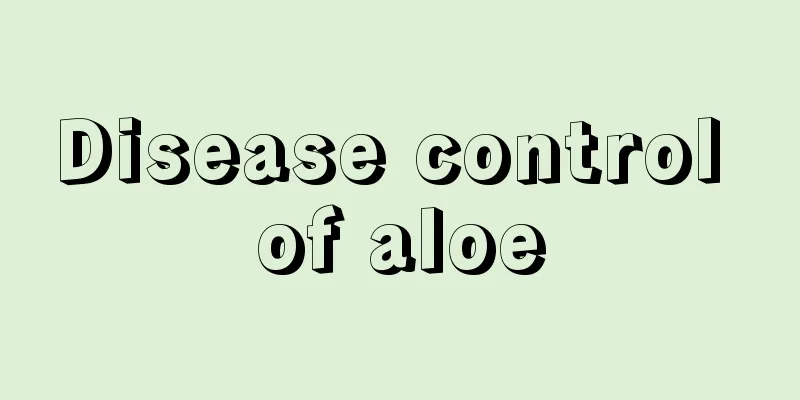Disease control of aloe

RustRust is one of the most common diseases of aloe vera, and it often occurs in the summer when the temperature is high and the humidity is high. The pathogen is spread through spores and overwinters with the diseased plants on the surface of the soil. The spores grow under the epidermis and turn dark brown when they rupture. Prevention and treatment methodsIt requires careful care and observation. If disease occurs, remove the diseased and damaged leaves of aloe vera in time and burn them. Brown spotIn the early stages of aloe brown spot disease, many dark green water-soaked spots will appear on the leaves, and as the disease progresses, the spots will gradually expand and become round. In the later stage of the disease, many black particles will appear on the lesions. The more severe the disease is, the more particles there are, and in severe cases it can cause the entire pot of aloe to rot. Prevention and treatment methods1. Plant disease-resistant varieties. 2. Strengthen the management and care of potted plants, pay attention to appropriate room temperature, maintain ventilation, and apply fertilizer evenly. 3. Pay more attention to the potted plants. If you find diseased leaves, remove them immediately and destroy them. 4. When disease occurs, spray 1000 times liquid of 75% thiophanate-methyl powder. Spray once every 2-3 weeks, and 3-4 times within a year. Leaf blightLeaf blight mostly occurs in the southern region and is spread through water or insects. The symptoms include small dark brown spots on the tip of the leaves, which gradually expand and dry up. The spots shrink and later form small black spots in an array. Prevention and treatment methods1. Pay attention to observation and prevent the spread of diseases 2. When planting, choose varieties with strong disease resistance, such as Chinese aloe, Curacao, etc. 3. Aloe vera is not cold-resistant, so pay attention to the combination of fertilizer and water to enhance its disease resistance. 4. Use potted plant pesticides for prevention and control (600 times solution of 75% thiophanate-methyl wettable powder). |
<<: Diseases and prevention methods of air plants
>>: Diseases and prevention methods of the Chinese lucky charm
Recommend
Is Chlorophytum comosum poisonous?
one. Toxic or not This type of spider plant is no...
When is the best time to sow cyclamen?
Cyclamen sowing time Cyclamen is also known as ra...
How to water the fern
Watering tips for fern The money fern is a plant ...
What to do if rosemary has bugs
aphid Rosemary rarely has insect pests, and they ...
How long does it take for Staghorn Begonia to adapt to the pot?
The time for Staghorn Begonia to adapt to the pot...
How long does it take for ruby leaf cuttings to germinate
How long does it take for ruby leaf cuttings to...
Can succulents be grown with wood ash?
Can wood ash be used to grow succulents? Wood ash...
Can pineapples be grown in Hunan?
Can pineapples be grown in Hunan? Pineapples can ...
What are woodlice and are they harmful to humans?
1. What is a woodlice? Woodlice are what we call ...
Can the fragrant wood be grown indoors?
Can the fragrant wood be grown indoors? Fragrant ...
Lavender season
1. Open Season Lavender blooms in the summer, aro...
What is the flower of Epiphyllum? Pictures of Epiphyllum
1. Plant introduction 1. Morphological characteri...
How to grow sunflowers
1. Maintenance methods 1. Lighting: As its name s...
Soybean growth environment conditions and characteristics
Soybean growth environment conditions and require...
In autumn and winter, you have to grow large pots of flowers. They are high-end and can protect the house. One pot can last for 20 years!
Monstera - the most popular green plant Monstera ...









